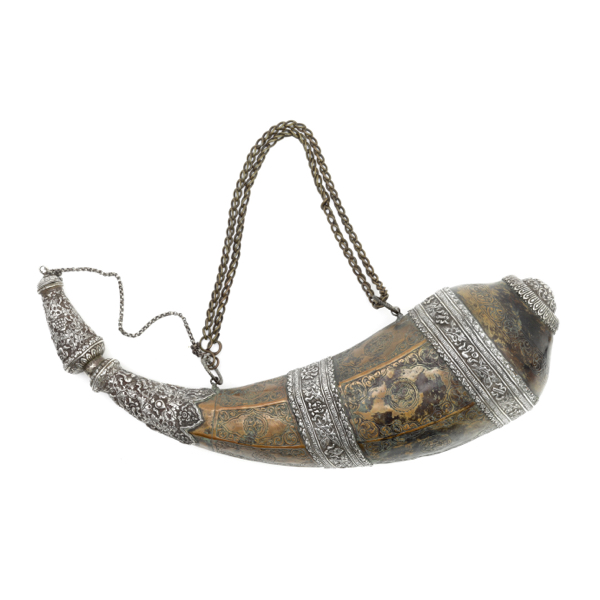
Large Tibetan copper and silver horn
Such work was made in the Royal workshops of Lhasa.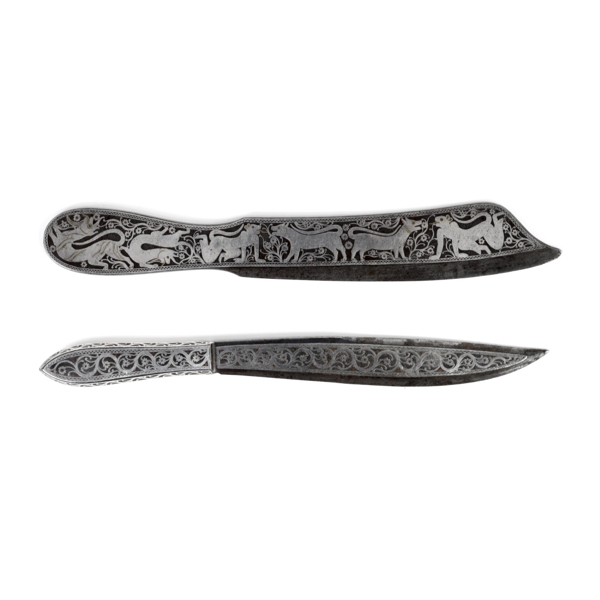
Pair of Burmese overlaid knives
Very rare set of Burmese knives from Mindan village.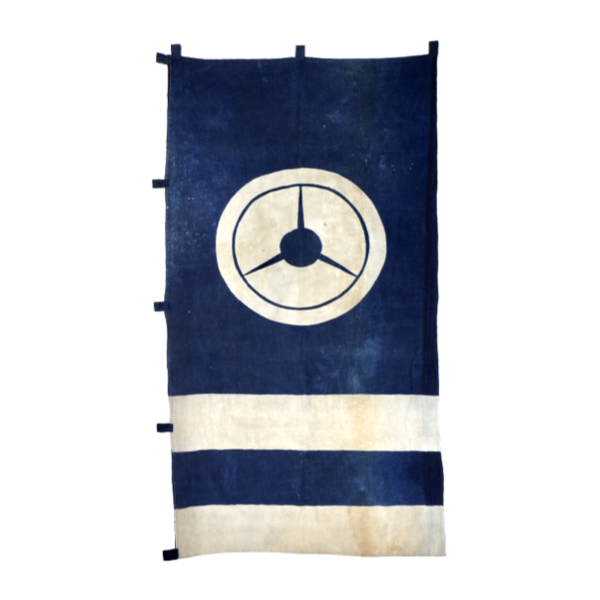
Japanese battle flag
Resist-dyed cotton in white and indigo, with three fans mon.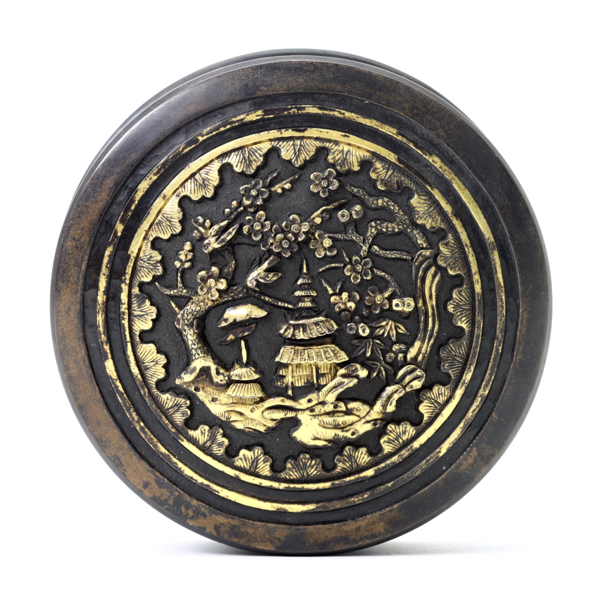
Sawasa east indian inkwell
Sawasa is metalware in black and gold made primarily for the Dutch expat community in Asia.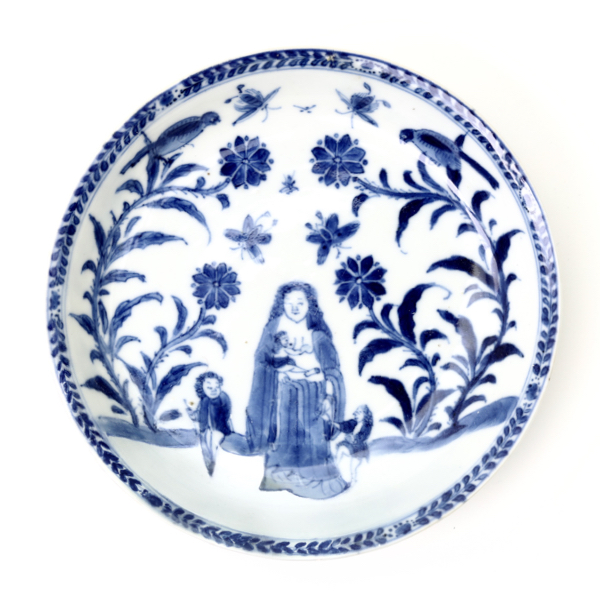
Chinese dish with lady mary and child
A rare early dish meant for a Christian market.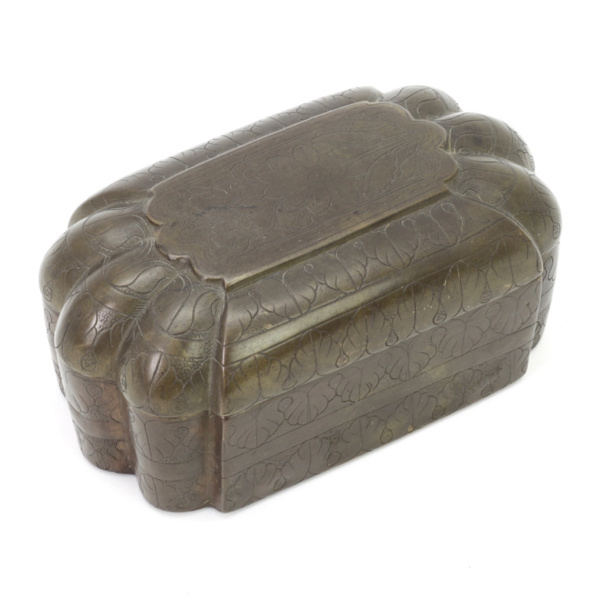
Indian betel box
Made of brass and bronze, now deeply patinated.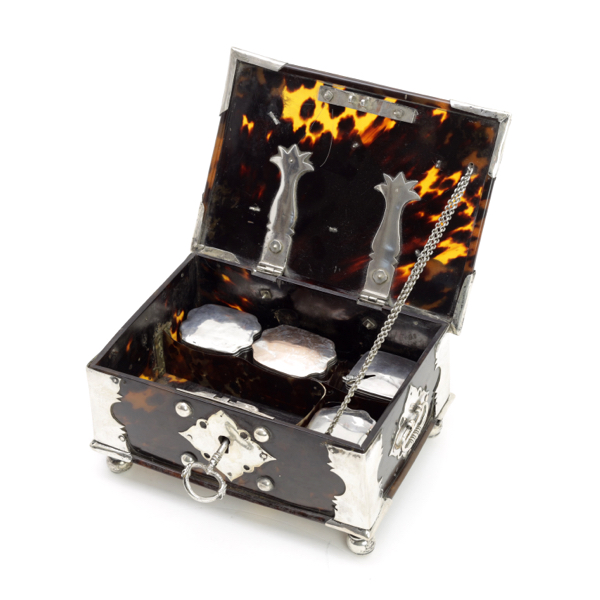
Dutch Colonial sirih box
Complete with key, inside divider and four silver containers.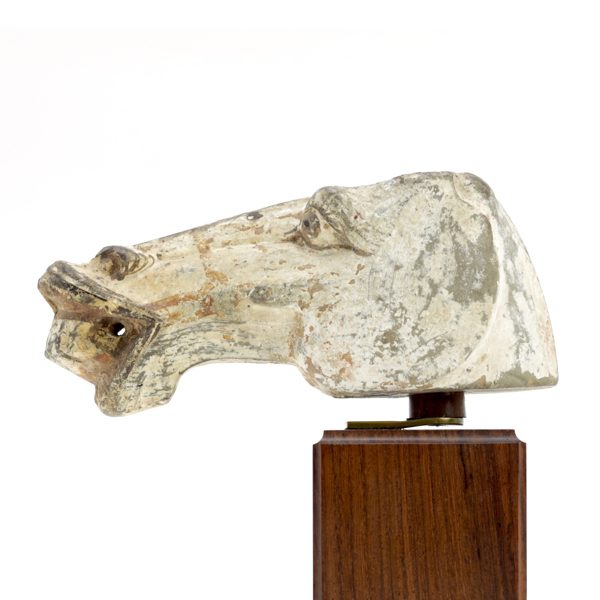
Tang dynasty horse head
Mounted on a custom hardwood stand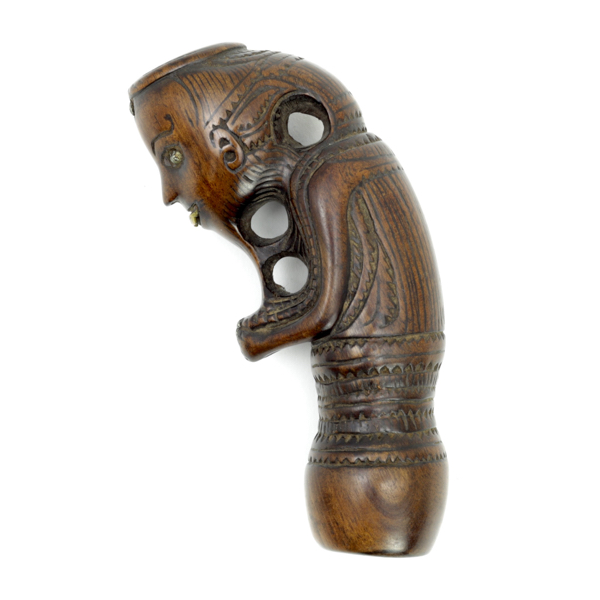
Unusual Indonesian carved grip
Made of carved wood with metal inlays for eyes and mouth.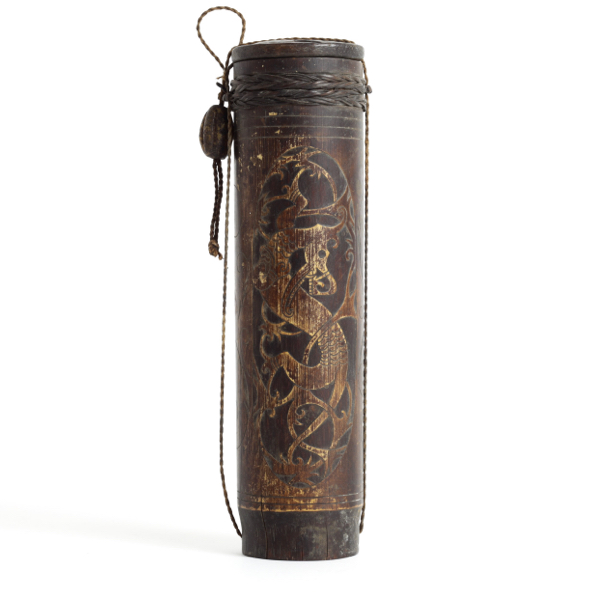
Dayak bamboo container
Carved with typically Dayak aso "dog dragon" motifs.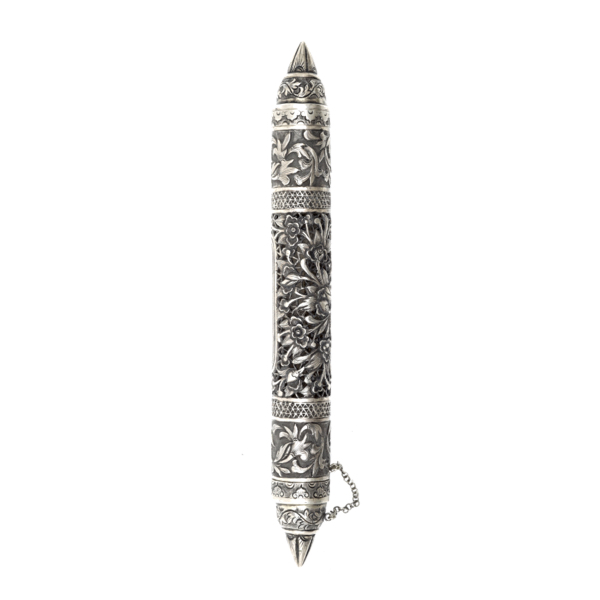
Burmese silver manuscript holder
For holding and protecting important documents.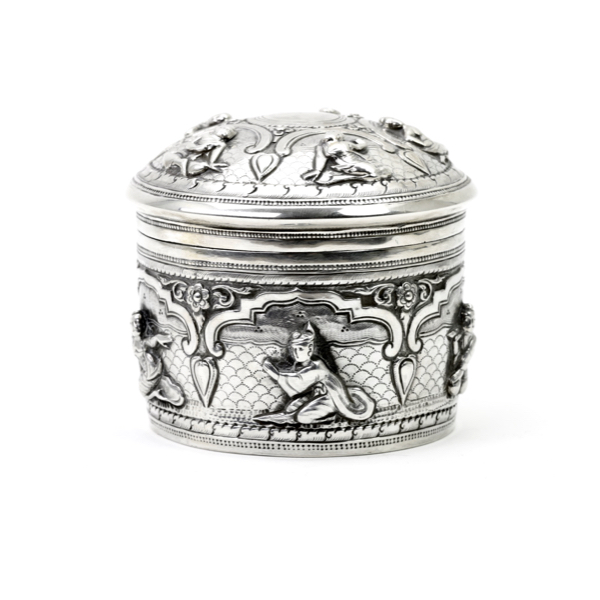
Burmese silver lime container
Finely worked in repousse with ten figures on container and lid.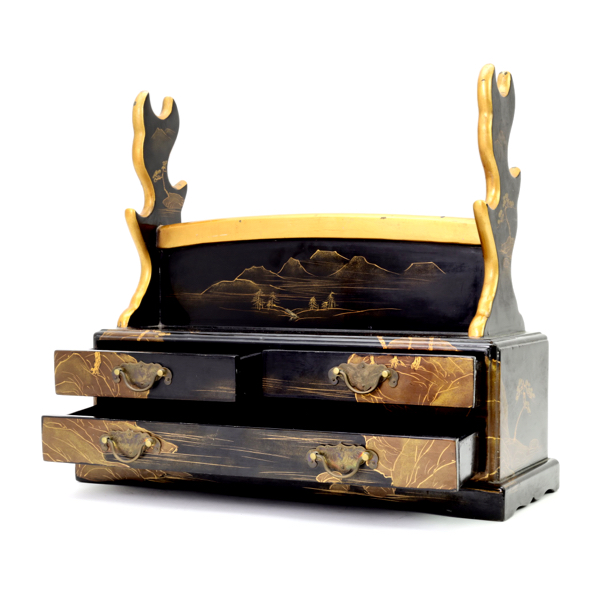
Japanese lacquered sword stand
With scenes of pine trees and three drawers.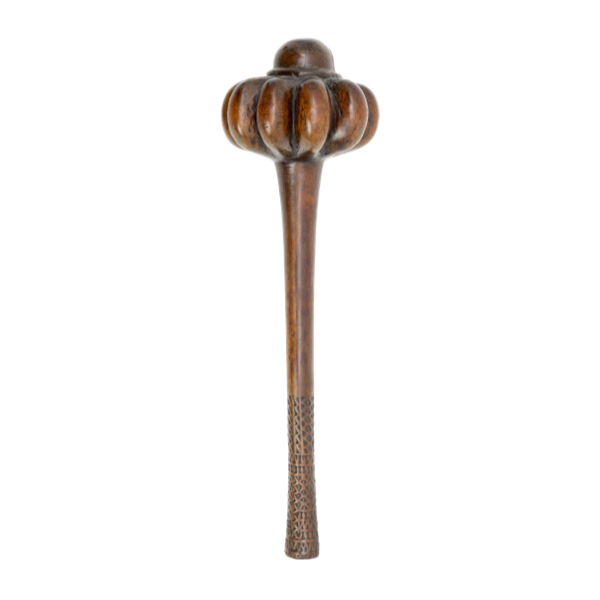
Fijian throwing club
Old 19th century piece with a nice smooth and dark patina.
Chinese export lacquer box
A nice example with unusually fine lacquerwork and a monogram in the lid.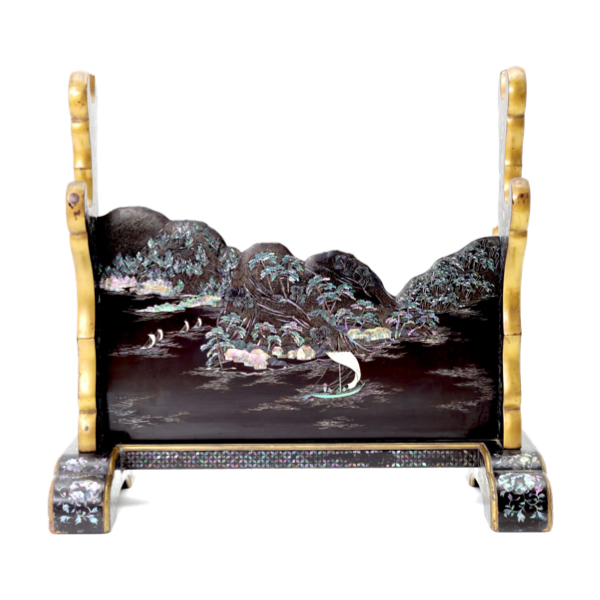
Mother of pearl inlaid katana kake
In black and gold urushi lacquer, with fine mother-of-pearl inlays with aquatic landscapes on both sides.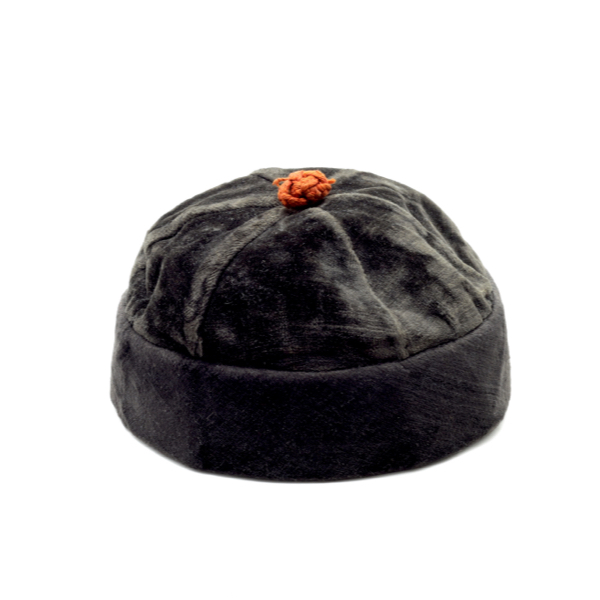
Black velvet Beijing hat
The hat traditionally worn by Beijingese gentlemen.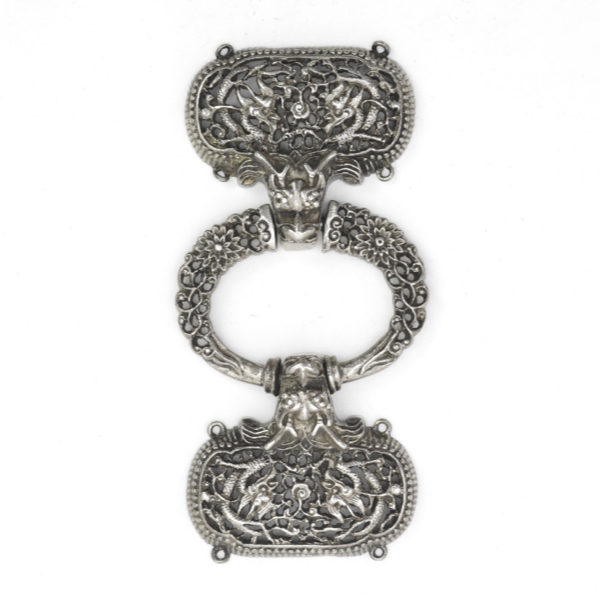
Pierced silver buckle
Made of solid silver, in Qing court style. With 19th-century European import marks.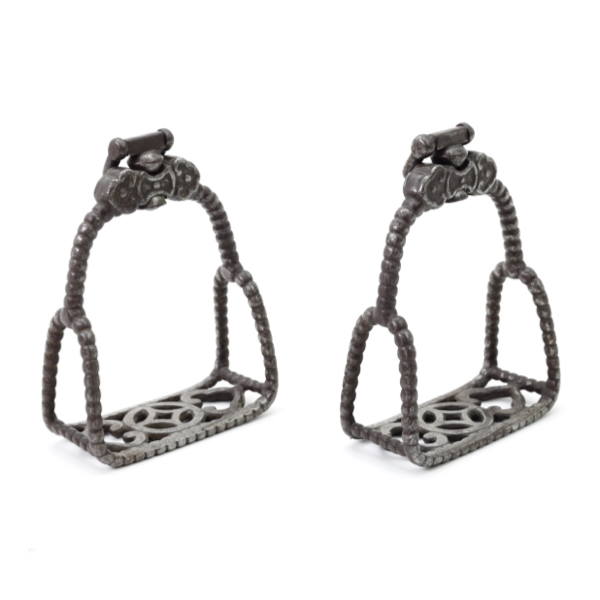
Ming period stirrups
Forged iron, swiveled stirrups with an entirely beaded frame and openwork platforms.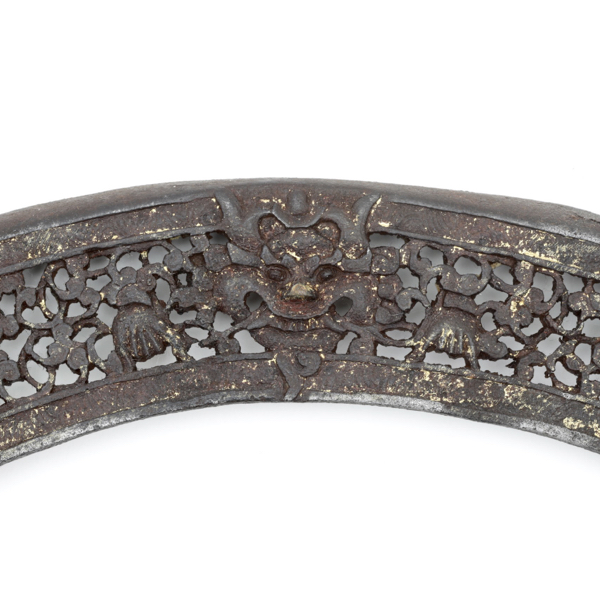
Pierced iron saddle bows
This kind of fine work is typical for Tibetan work of the 15th-16th centuries.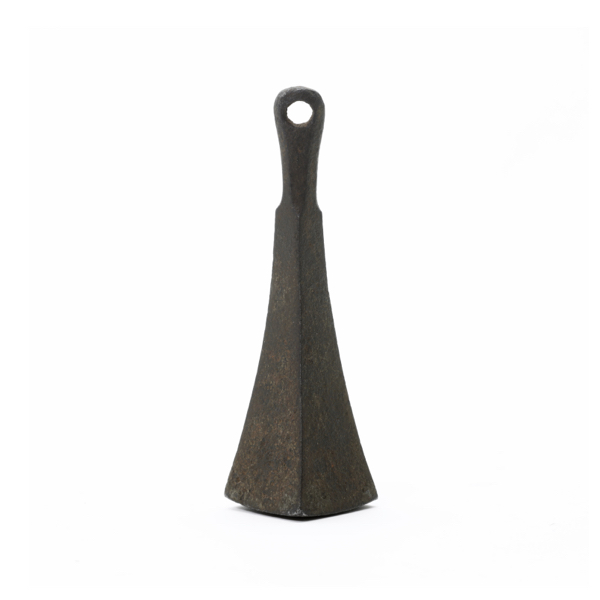
Tibetan nomad's whip end
An iron weight that was attached to a long leather strap.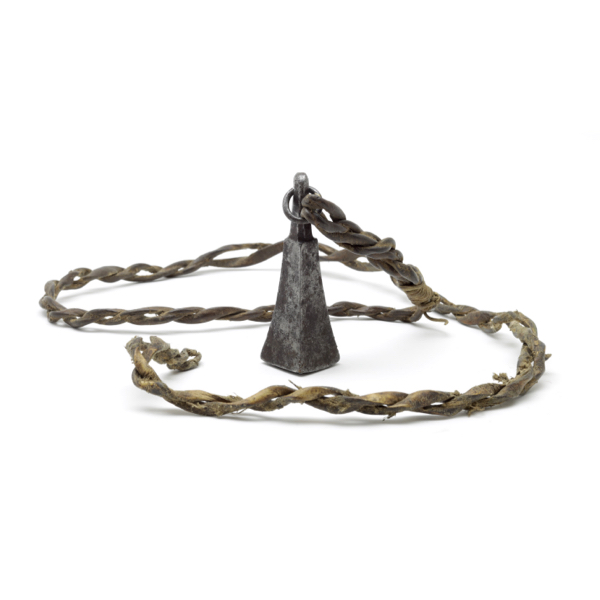
Tibetan nomad's whip
Consisting of an iron weight on a long leather strap.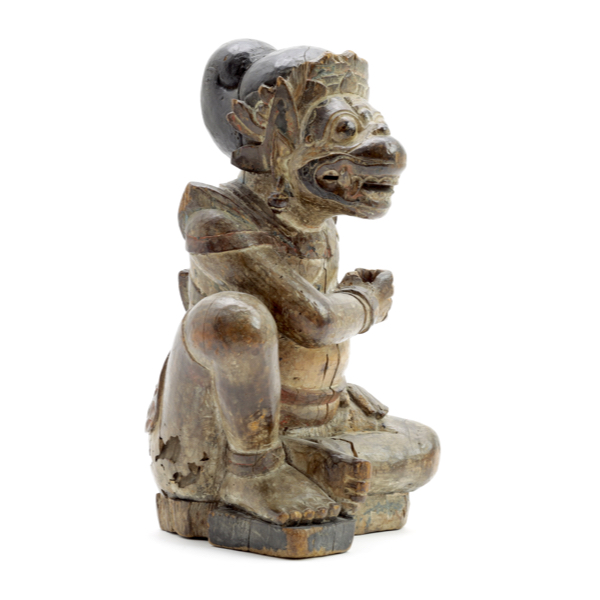
Old Hanuman keris holder
A charming Balinese keris holder in the form of Hanuman, the brave monkey king.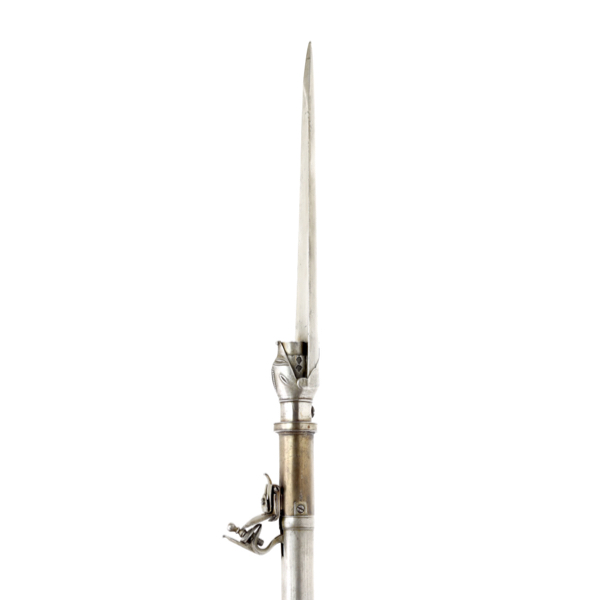
Flintlock lance
A what? Yes exactly. An extremely rare piece, the only example I am aware of in published collections at least.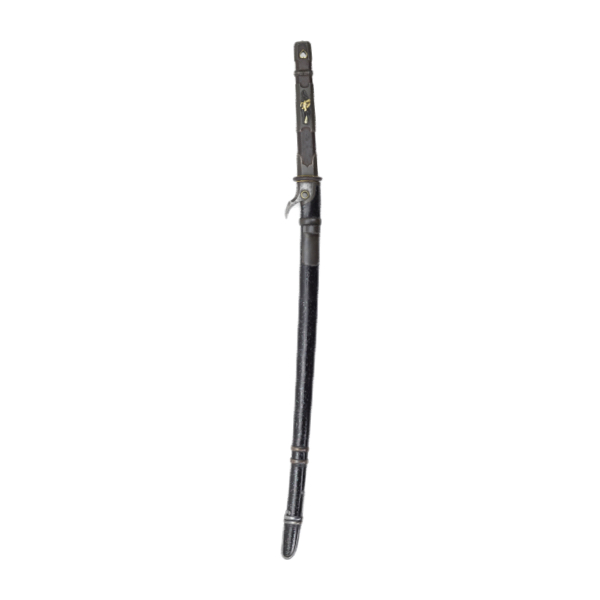
Very good hachiwari
Literally "skull splitter", more widely known as kabutowari; "helmet splitter." An excellent example, one of the best of its type.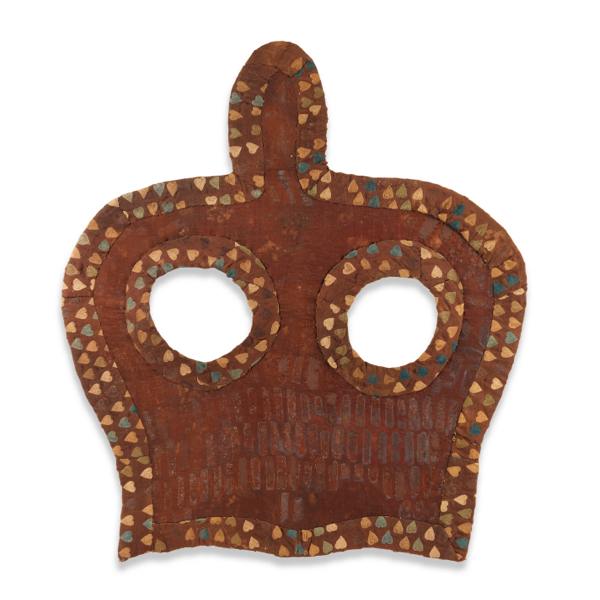
Northern Wei shaffron
Silk horse mask from the Xianbei ruled dynasty which ruled northern China from 386 to 534 A.D.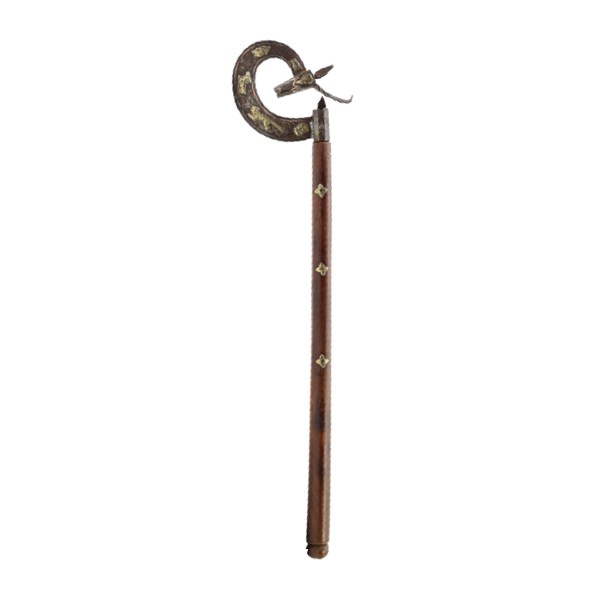
Indian Antelope Axe
An enigmatic type of axe, this one probably from tribal north India.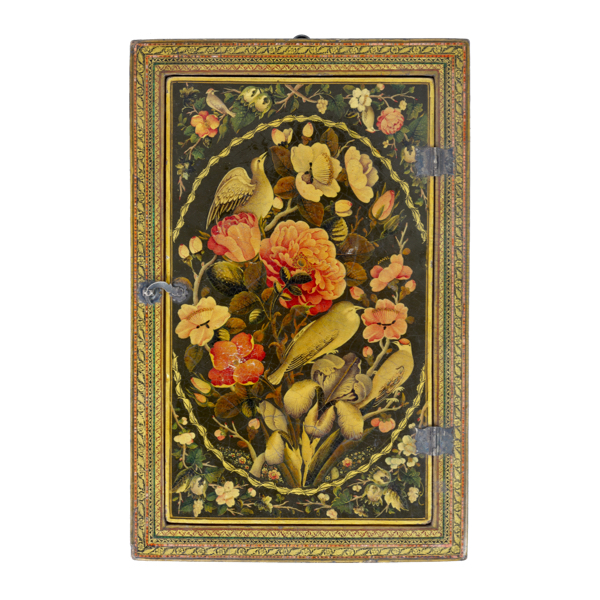
Persian mirror case by Riza Al-Imami
Made of pasteboard, finely lacquered with roses and nightengales.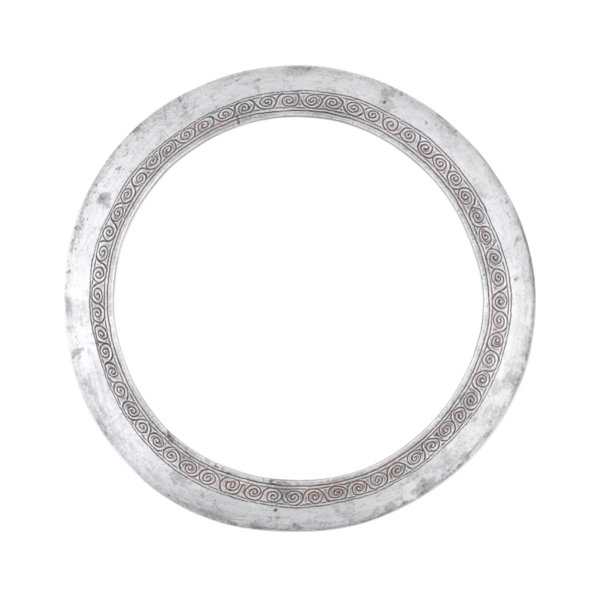
Sikh fighting chakram
A sharp, heavier user. Not the flimsy type usually encountered.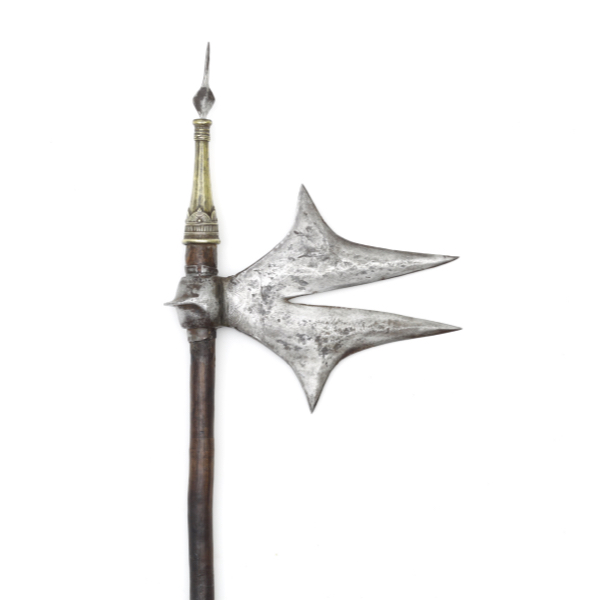
Rare bifurcated Khond axe
Very rare subtype of a Khond tribal axe with double points.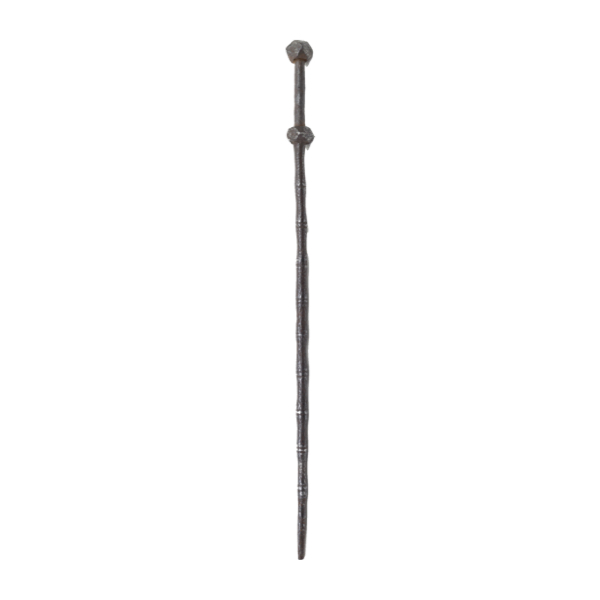
Chinese tiěbiān mace
A Chinese "sword breaker" with the rarer, bamboo-sectioned rod.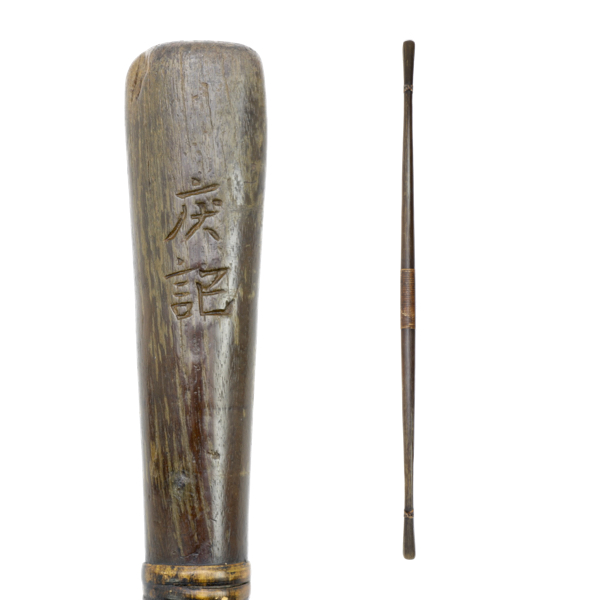
Chinese fighting carrying pole
A heavily executed Chinese carrying pole that was used as a weapon.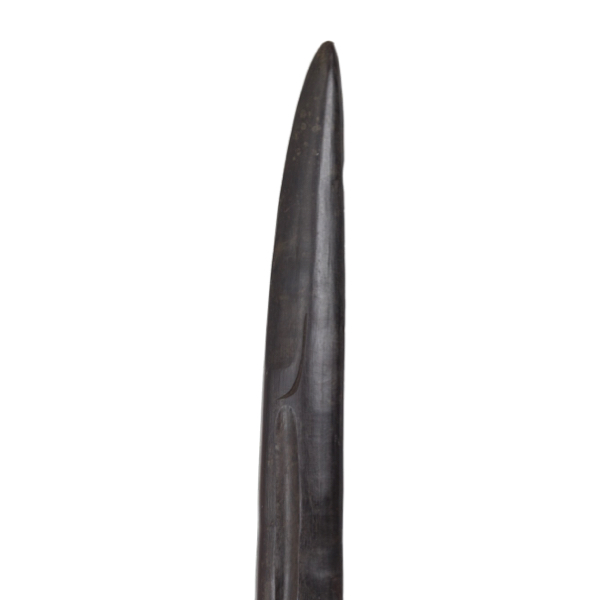
Southeast Asian sword club
This enigmatic hardwood club is modeled after a sword.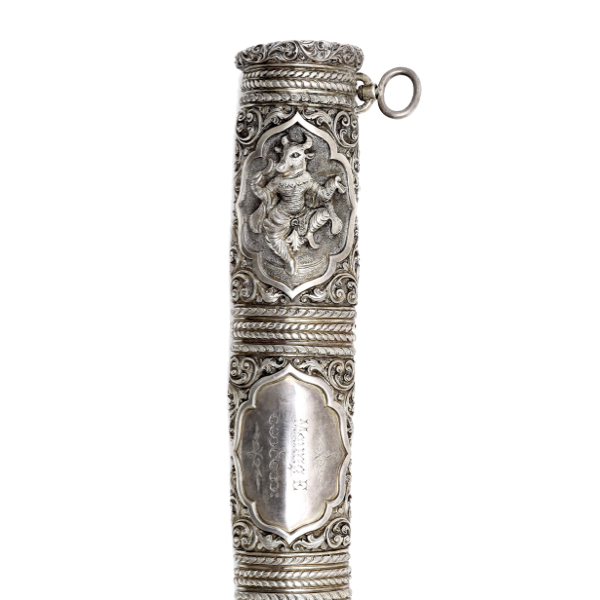
Fine Burmese silver sword scabbard
It represents the best of Burmese silversmithing with repousse work in high relief.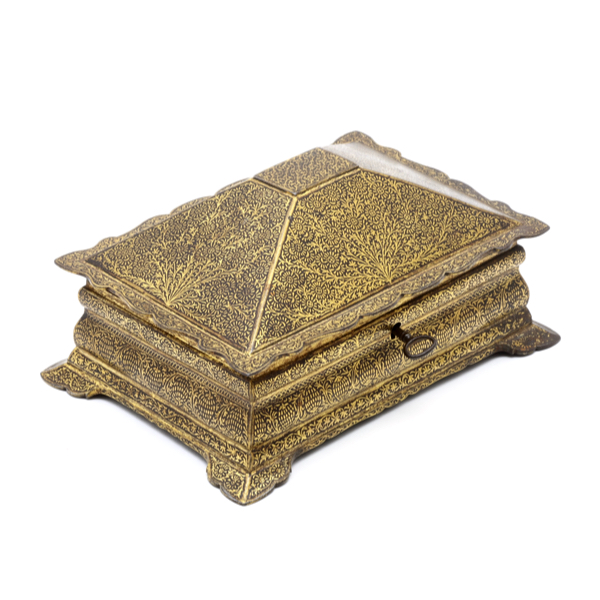
Punjabi koftgari lockbox
Iron lockbox with key, decorated with the gold koftgari normally seen on arms.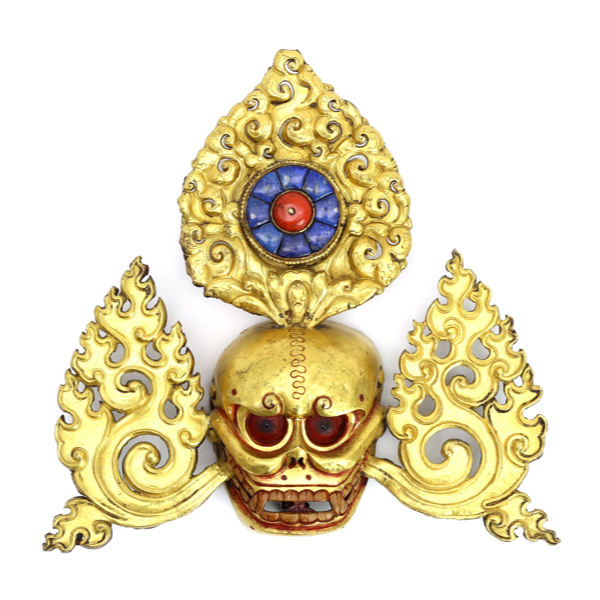
Tibetan oracle crown skull
A flaming skull that was once part of the crown of a Tibetan oracle.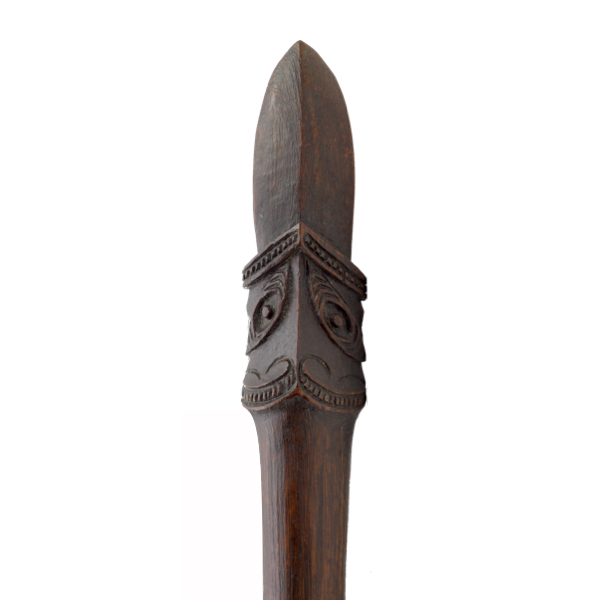
Maori taiaha war staff
Of the practical fighting type, made of a dense wood known as eroa.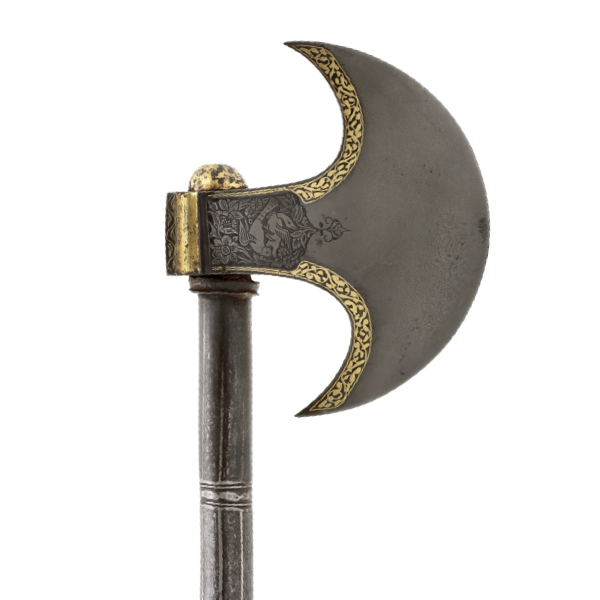
Persian wootz axe
With fine chiseled decoration and largely intact koftgari.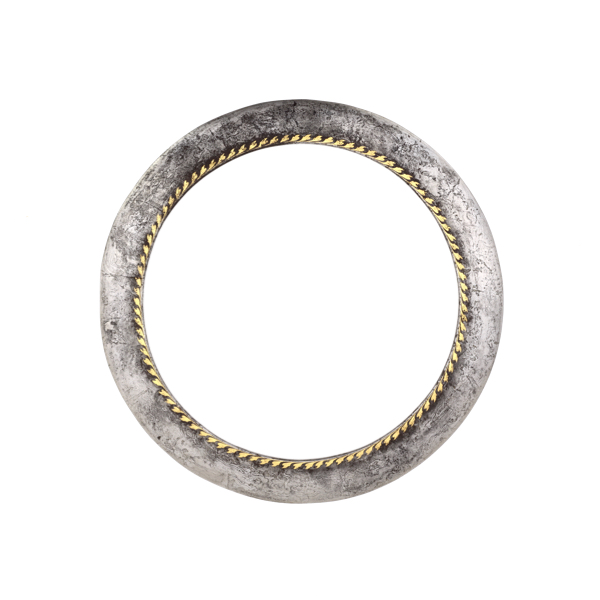
Heavy Sikh chakram
Traditionally associated with Vishnu, it was an essential piece of equipment for the Sikh nihang.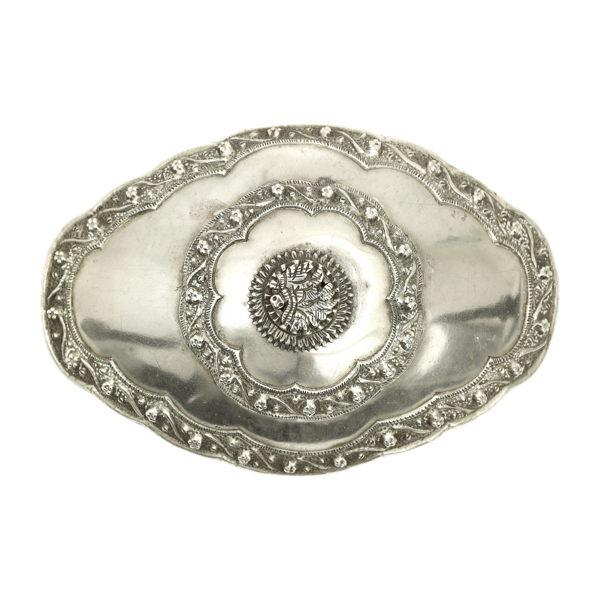
Peranakan "pending" buckle
Belt buckle from West-Java, worn by Peranakan and wealthy Javanese women.
Indian madu parrying weapon
Made with two antelope horns and an iron shield.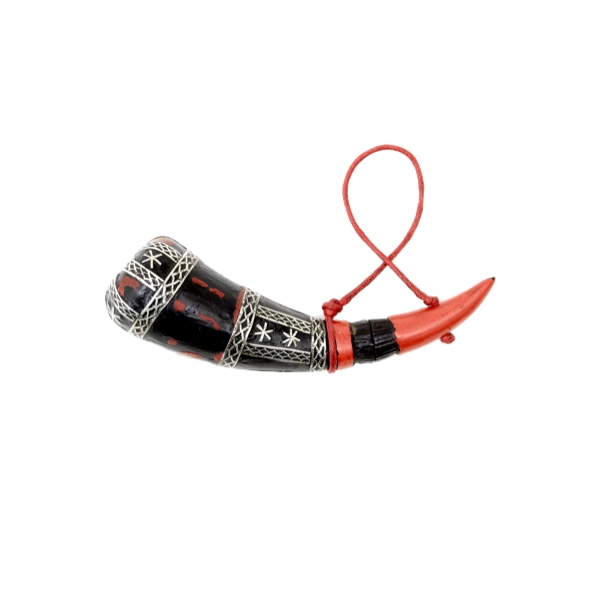
Chin nicotine flask
A very rare flask used by Chin men of Burma for sipping nicotine water.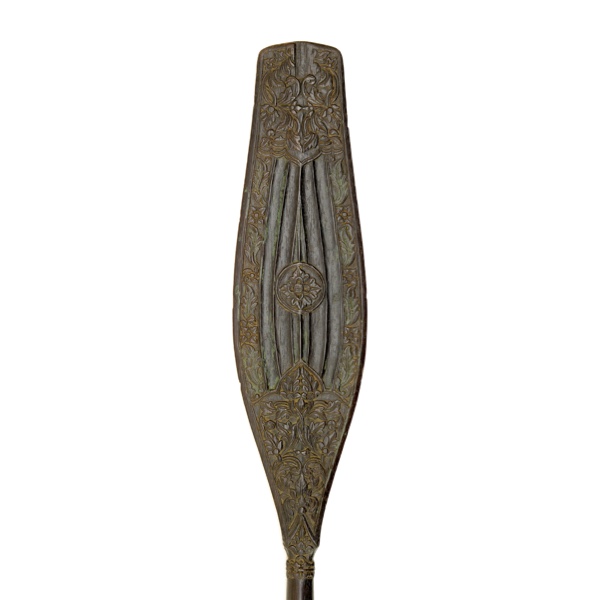
Dayak carved ceremonial paddle
A fine ceremonial paddle of the Ngaju Dayak of southern Borneo.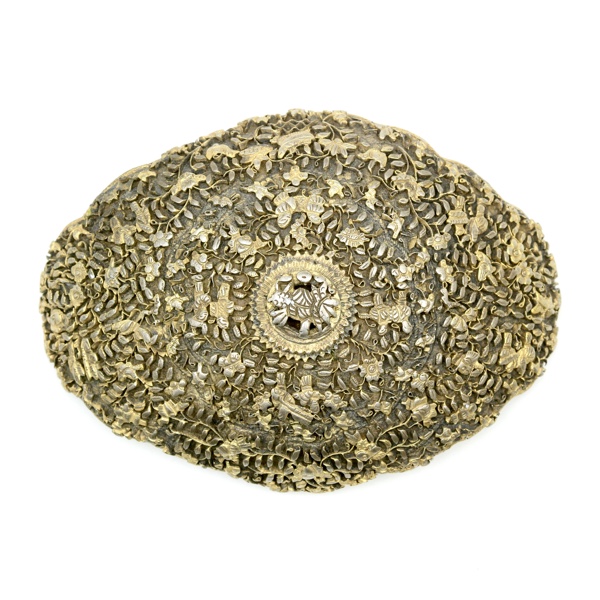
Fine Peranakan belt buckle
This style was produced in Tangerang, just West of Batavia, now Jakarta.
Chinese crescent tipped maces
A highly unusual set of paired maces with crescent tips.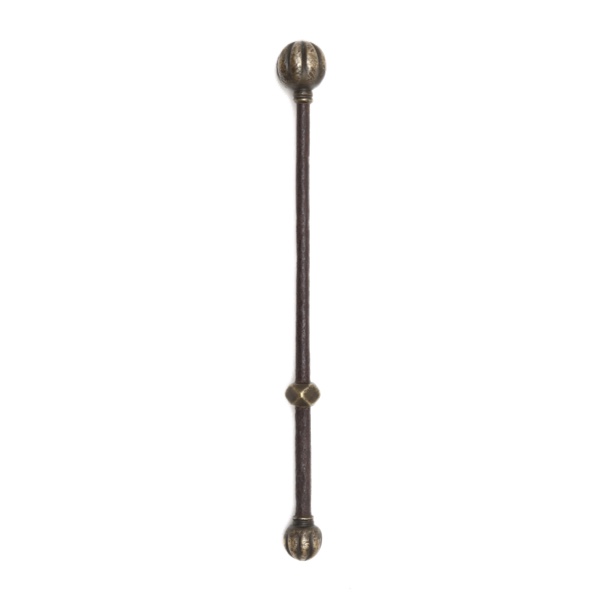
Chinese garlic mace
Called suàntóu gǔduǒ in Mandarin, with characteristic brass head.
A remarkable Khond axe
The best of its kind known to me, with silver overlay and ivory finial.
A Persian crescent axe
With lacquered shaft. Previously sold at Sotheby's in 1985.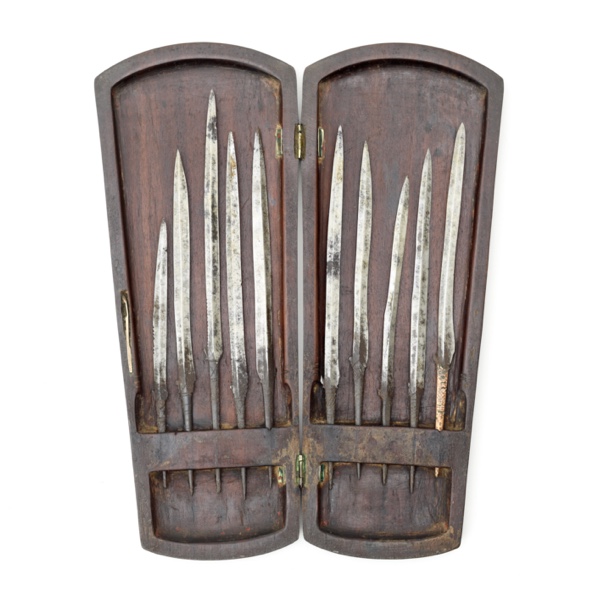
Indonesian cockfighting spurs in box
Weapons not for man, but for an unfortunate rooster. Retired, in a hardwood box.
